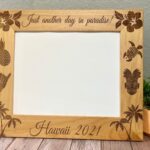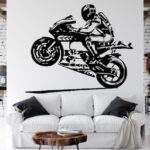I. Creative Ideas for Upcycling a Full Length Mirror
II. Step-by-Step Guide to Transforming Your Mirror
III. Tips for Choosing Materials and Techniques for Upcycling
Creative Ideas for Upcycling a Full Length Mirror
Upcycling a full-length mirror can breathe new life into a piece of furniture that may otherwise feel outdated or out of place. With a little creativity and some elbow grease, you can transform that old mirror into a stunning accent for your home. Here are some inspiring ideas to get you started!
1. Decorative Frame Makeover
If your mirror has a basic or worn-out frame, consider giving it a decorative touch. Here are a few ideas:
- Paint It: A fresh coat of paint can completely change the look of your mirror. Choose a bold color to make it a statement piece, or go for a soft pastel for a more subtle vibe.
- Decoupage: Use decorative paper, fabric, or even old book pages to decoupage the frame. This adds texture and personality!
- Add Molding: If you’re feeling ambitious, you can attach decorative molding around the frame. This gives it a more polished, high-end appearance.
2. Mirror Gallery Wall
Why not turn your mirror into a star attraction on a gallery wall? Here’s how:
- Select a Theme: Choose a theme for your gallery wall—this could be a color palette, a collection of family photos, or art pieces.
- Mix and Match: Arrange your full-length mirror alongside smaller frames and artworks. This creates visual interest and depth.
- Hanging Techniques: Play with different hanging heights and orientations. A tilted mirror can add a fun, eclectic touch!
3. Functional Pieces
Upcycling can also mean making something functional! Think about how you can incorporate your mirror into your daily life:
- Jewelry Organizer: Attach hooks or a small shelf to the mirror frame for hanging necklaces or displaying small trinkets.
- Message Board: Paint the edges with chalkboard paint for a mirror that doubles as a space for notes and reminders.
- Storage Solutions: If your mirror is positioned in a bathroom or entryway, consider adding a small shelf or baskets underneath for storing essentials.
4. Artistic Displays
Your full-length mirror can also become a canvas for your artistic expression. Here are some creative options:
- Mirror Art: Use a spray adhesive to apply art prints or fabric to the back of the mirror. When hung, the artwork will reflect, creating a unique visual effect.
- Nature-Inspired: Attach dried flowers, leaves, or twigs to the frame for a rustic, nature-inspired look.
- Stenciled Designs: Use stencils to add patterns or motifs directly onto the mirror’s surface (just be sure to use removable paint). This can create a beautiful frosted look!
Upcycling your full-length mirror can be a fun and rewarding project, allowing you to showcase your creativity while enhancing your living space. Whether you opt for a bold makeover or a subtle touch, the possibilities are endless! So gather your materials and get ready to unleash your inner designer!
Step-by-Step Guide to Transforming Your Mirror
Ready to dive into the exciting world of upcycling? Transforming a full-length mirror can be a rewarding project that not only breathes new life into an old item but also adds a unique touch to your home decor. Let’s roll up our sleeves and get started with this step-by-step guide!
Step 1: Gather Your Supplies
Before we get our hands dirty, it’s essential to gather all the materials you’ll need for your project. Here’s a handy list:
- A full-length mirror
- Sandpaper (medium and fine grit)
- Paint or wood stain
- Brushes or rollers
- Decorative elements (e.g., stencils, decals, or crafting supplies)
- Glue (for any embellishments)
- Protective gear (gloves and a mask if sanding or painting indoors)
Step 2: Prepare the Mirror
Start by cleaning the mirror thoroughly to remove any dust or smudges. Once it’s clean, it’s time to focus on the frame. If the frame is wooden, give it a gentle sanding with medium-grit sandpaper. This step will help any paint or stain adhere better. If your frame is plastic, you can still give it a light scuffing to help the paint stick.
Step 3: Choose Your Color and Finish
Now comes the fun part—deciding how you want your mirror to look! Do you want a sleek modern vibe, or something rustic and vintage? Here are a few ideas to consider:
- Bold Colors: A bright color can make a statement and serve as a focal point in your room.
- Metallic Finishes: Gold or silver spray paint can add a touch of glam.
- Decoupage: Use scrapbooking paper or fabric to create a unique design on your frame.
Whichever finish you choose, make sure to apply a coat of primer if necessary, especially with darker colors or shiny surfaces.
Step 4: Painting the Frame
Once you’re ready, grab your brush or roller and get painting! If you’re going for a solid color, two coats might be necessary for even coverage. Allow adequate drying time between coats. Remember, patience is key here—your mirror will turn out beautifully if you take the time to do it right!
Step 5: Adding Decorative Elements
If you want to up the ante, consider adding decorative elements after the paint has dried. This could be anything from vinyl decals to stencils, or even small embellishments like beads or shells. Just let your creativity flow!
Step 6: Sealing Your Work
After everything is set and dry, sealing your piece with a clear coat will help protect your hard work from scratches and wear. Choose a sealant that matches your finish—matte for a soft look, or glossy for a shine!
Step 7: Hang It Up or Lean It!
Finally, find the perfect spot to display your newly transformed mirror! Whether you hang it on the wall or lean it against a surface, your refreshed mirror is sure to be a conversation starter!
Congratulations on completing your upcycling masterpiece! Not only have you created something beautiful, but you’ve also given new life to a full-length mirror that might have otherwise gone unnoticed.
Tips for Choosing Materials and Techniques for Upcycling
Hey there, fellow DIY enthusiast! Upcycling a full-length mirror can be such a rewarding project, but let’s face it—getting the right materials and techniques can make or break your masterpiece. Here are some friendly tips to help guide you through the process of choosing what you need!
1. Assess Your Mirror’s Condition
Before diving into the fun stuff, take a moment to inspect your mirror. Look for:
- Cracks or chips: If your mirror’s surface is damaged, you might consider refinishing it or even replacing the glass.
- Frame quality: Some frames can be sanded down or painted, while others may require complete replacement.
- Style compatibility: Consider the existing style of the frame. Is it ornate, minimalistic, or rustic? This will guide your choice of materials.
2. Choose Your Upcycling Style
Decide on a style that resonates with you. This will help narrow down your material choices:
- Rustic: Think reclaimed wood, burlap, or jute for a charming, farmhouse feel.
- Modern: Opt for sleek metal finishes or bold paint colors for a contemporary vibe.
- Vintage: Use decoupage, distressed paint, or antique finishes to give your mirror a timeless look.
3. Selecting Your Materials
Now that you’ve got a style in mind, let’s talk materials! Here are some commonly used options:
- Paint: Acrylic paint is a great choice for a pop of color, while chalk paint offers a matte finish that’s perfect for a vintage look.
- Fabric: Use fabric remnants to create a unique texture. Consider using old curtains, upholstery fabric, or even some fun printed material.
- Stencils: If you want to add patterns or quotes, stencils can be a fun way to personalize your mirror!
- Hardware: Don’t forget about decorative knobs or hooks! These can add a practical and stylish touch to your mirror.
4. Techniques to Consider
Every upcycling project can benefit from a unique approach. Here are some techniques you might want to try:
- Paining: A fresh coat of paint can instantly transform the look of your mirror.
- Decoupage: Gluing decorative paper or fabric onto the frame can create a stunning visual effect.
- Staining: If you’re working with wood, a wood stain can enrich the grain and enhance the natural beauty of the frame.
- Adding Accessories: Incorporate hooks for jewelry, shelves for plants, or even lighting to make your mirror functional and stylish.
5. Prepare for a Fun Project!
Once you’ve selected your materials and techniques, it’s time to gather your supplies and get ready for some hands-on fun! Remember, upcycling is all about creativity, so don’t be afraid to experiment and make it your own. After all, you’re not just transforming a mirror; you’re making a personalized piece of decor that reflects your unique style!
So grab those paintbrushes, tape down those edges, and let your imagination run wild. Happy upcycling!










Comments